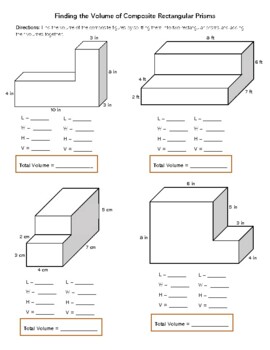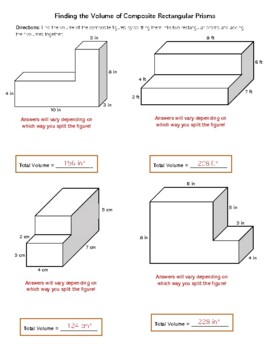Finding the Volume of Composite Rectangular Prisms - WORKSHEET for students!
- PDF
What educators are saying
Description
This is a fluency worksheet to help students practice finding the volume of composite rectangular prisms. It includes 4 composite shapes that students must split into two rectangular prisms. There are blanks for students to record lengths, widths, heights, and volumes for each one so that they then can add the volumes together. You might also enjoy my follow-up worksheets for this skill: Finding the Volume of MORE Composite Rectangular Prisms and Finding the Volume of EVEN MORE Composite Rectangular Prisms. You may also be interested in my Volume Reference Chart.
See my Volume Bundle for my entire collection of volume fluency worksheets!
Fits standard 5.MD.C.5c -- Recognize volume as additive. Find volumes of solid figures composed of two non-overlapping right rectangular prisms by adding the volumes of the non-overlapping parts, applying this technique to solve real-world problems.
Clipart Credit: Rulers and Pan Balances



